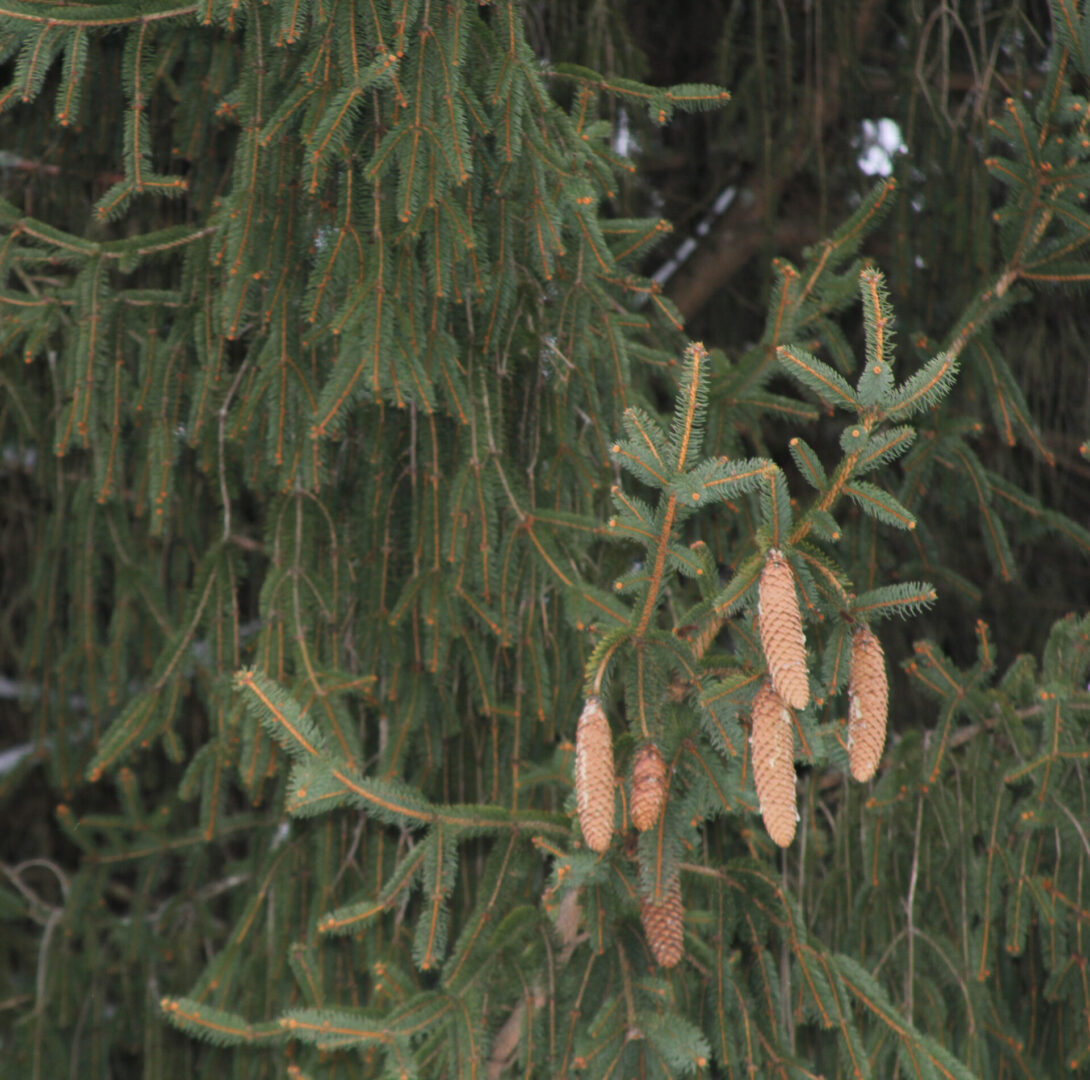Norway spruce (Picea abies) is Europe’s most valuable conifer. It favors cooler climates and higher altitudes. This spruce is widely planted in North America — so much so that it has become naturalized in Pennsylvania and other northern states.
It is very common to see a pair of the tall spruces standing guard in front of farm houses and country homesteads. You might also encounter large stands of Norway spruce on state forest lands or in one of Pennsylvania’s many state parks.
During the late 1800s, timber barons stripped trees from almost every corner of the Keystone State. When the state began acquiring large tracts of this land, Norway spruce became a major part of reforestation efforts. According to Joseph Illick’s 1923 book “Pennsylvania Trees,” more than 5 million Norway spruces were planted on state lands during the early 1900s. These lands are part of our state forest system, which is managed by the Department of Conservation and Natural Resources. Many of those trees planted over a century ago still stand today.
Like Pennsylvania’s native black and red spruce, Norway spruce has a single straight, central trunk with lateral branches that arch upward. Norway is the only spruce, however, that has downward-drooping secondary branchlets growing from both sides of all lateral branches. This characteristic makes the tree easy to recognize — even from a distance. This is believed to be an adaptation to life in north-country environments because it allows heavy snow to slide off, rather than break the branches. Both twigs and branches have reddish-brown bark.
The medium green-colored needles of Norway spruce are four-sided, about an inch long and end in sharp points. Oddly enough, if you stroke the branches from the trunk towards the tip, the needles feel soft. If you stroke them in the opposite direction, their true prickly nature is revealed.
Older Norway spruces are topped with many 4- to 7-inch-long cones. These are the largest cones of any spruce tree, and they often are found in holiday decorations. The cones are green when they first form and turn a medium brown as they mature in the fall. Each cone is covered with spiraling rows of large but thin woody scales. Each scale protects a winged seed. Red squirrels frequently pick the cones and strip the scales to eat the seeds. This is evidenced by piles of spruce cone scales beneath logs, stumps or large rocks that serve as red squirrel feeding stations.
Norway spruce makes a good windbreak and is often planted in single or double rows for that purpose. Although not as popular as firs, blue spruce or Scotch pine, Norway spruce is widely grown for use as Christmas trees. It is most popular in Europe.
Each year since 1947, a large (over 65 feet tall) Norway spruce has been given to the people of London by the city of Oslo, Norway, to show gratitude for British support of Norway during World War II. The tree is decorated and displayed at Trafalgar Square from early December through early January.
More than 100 cultivars, or varieties, of this species have been identified. Some have varying coloration or dwarf or weeping characteristics. A few, such as “bird’s nest spruce” or “hedgehog spruce,” are sold as unique ornamentals.
Because of Norway spruce’s commercial importance in the old country, the European Forest Genetic Resources Programme has worked extensively with the tree. EUFORGEN, as the organization is known, promotes the maintenance of a wide genetic diversity to ensure that the species has evolutionary adaptability in the future. The wood of Norway spruce is used for construction, paper pulp, furniture and musical instruments.
Besides its commercial values, Norway spruce provides thermal winter cover to many species of birds and mammals, including white-tailed deer, elk, ruffed grouse and wild turkeys. Snowshoe hares browse the needles and twigs.
Two northern bird species, red and white-winged crossbills, are very much tied to spruce trees and their seeds. Some winters, when conifer seeds are sparce to our north, some crossbills migrate south into Pennsylvania. When they are spotted locally, they are almost always found high in spruce trees, such as those near the Benner Spring fish hatchery, or in the pines at Scotia Barrens.



